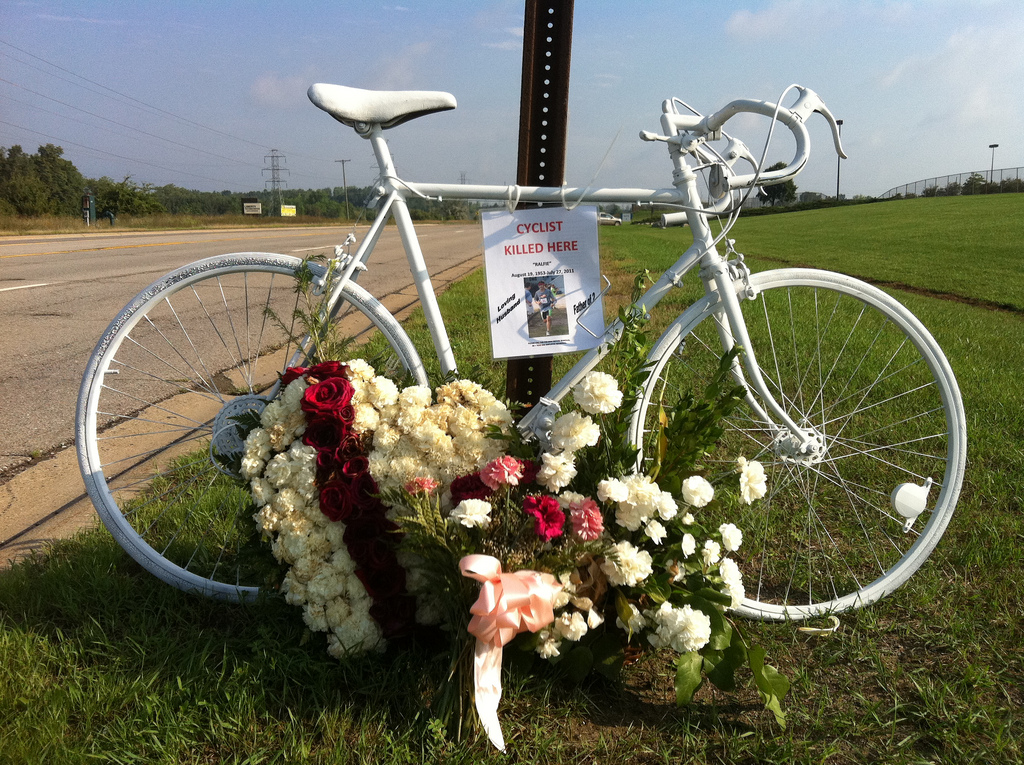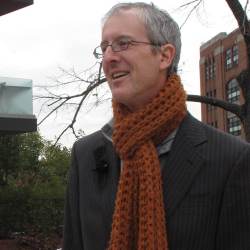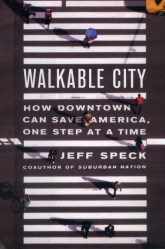City planner Jeff Speck has found the panacea for our ailing cities, something that could make even Detroit come to life again: walking.
In his new book, Walkable City: How Downtown Can Save America, One Step at a Time, Speck lays out something he calls his General Theory of Walkability. It’s not as platitudinous as one might think — Speck does own a car — but the book rests on the central point that cities designed for people, as opposed to those engineered for cars, will be the places of urban, demographic growth in the 21st century. If you build crosswalks, Speck’s theory goes, they will come.
“We used to call it New Urbanism — that’s scary. We called it Neo-traditional Design — that offended the progressives. People talk about density — we don’t even need to discuss that,” says Speck, who lives in Washington, D.C., and co-wrote the book Suburban Nation: The Rise of Sprawl and the Decline of the American Dream. “Reframing the whole argument under the rubric of walkability seems to be changing the game.”
OK. We’ll bite. Tell us, Mr. Speck, why it’s time to abandon our treadmills.
Q. Are you familiar with a band called The Proclaimers?
A. Yeah — “I would walk 10,000 miles,” or whatever it is.
Q. Would you walk 500 miles, Jeff?
A. To be the one that lands at your door?
Q. Yes.
A. I’m sure I have walked 500 miles in my lifetime, so yes, I would.
Q. Would you walk 500 more?
A. [laughing] I think I shall. I plan to.
Q. Now, you live in D.C. proper, correct?
A. I do, but I’m up at W Street which is far, far away from the heart of town. I can get anywhere I need to be in 15 minutes, just about, [on my bike].
Q. Do you have rules about walking and biking, versus driving?
A. It’s not a question of rules, it’s not a question of ideology. It’s a question of what’s practical, and on a daily basis I’ll make the decision whether to walk, ride my bike, take transit, or, God forbid, drive based on where I have to go and what’s easiest.
We’re gonna keep losing this argument as long as it’s some sort of moralistic hair shirt to ride a bike or walk. We just need to make places that cause people to find those choices both practical and pleasurable.
Q. But, you know, cities tend to be hostile toward two-wheeled machines without motors.
A. There are always going to be turf battles. … There are plenty of places where there’s just too much room for the car and everyone knows it, [and] when the public sees a traffic study that tells them their commute will not become congested because of my proposal, they are ready to go.
Q. Hey, you met your wife on a mass transit platform. Maybe we can find love in a hopeless place.
A. It was the MARC train that runs between Baltimore and D.C. And we were both at the BWI Airport. She had just flown in from Ireland, and I had just flown in from Miami. It’s a ride that now I would take a taxi because I’m older and less cheap, but back then it seemed the smart way to get to the airport.
Q. You bring up “bright flight” in your book — educated millennials flocking to cities — but I don’t think they’re moving in at such a clip that the rate of inner-city growth is eclipsing the rate of suburban growth.
A. Here’s what the Census showed us: Even the cities that comprehensively lost population between 2000 and 2010, they gained population tremendously in their innermost Census tracts. So what you have is first-ring suburbia, which happens to be within the city limits, is still losing out to outer-ring suburbia. But lots of people want to be in the heart of downtown. And so if cities’ physical boundaries were limited to their truly urban, walkable areas, we’d see nothing but shocking growth.
Q. Yeah, but aren’t those shocking growth rates just stemming from the fact that there weren’t many people living in inner urban areas in the first place?
A. The amount of growth seems shocking because so few people have lived in those areas recently, but in sheer numbers it’s still positive.
Q. How much is urban revitalization dependent on the political party in power?
A. The changes that are happening on the ground in many American cities now … [have] very little to do with any sort of political dominance at the local level. Many of the most wonderfully conservative, in the true sense of the word, achievements in American cities have been the work of conservatives. The Portland Growth Boundary was a Republican effort. I’m a bleeding-heart liberal, but I give credit where it’s due. I don’t see any relation between a state’s political climate, nationally or even locally, and people’s desire to see their downtowns have street life. My clients in Grand Rapids? Extremely Republican. My clients in Oklahoma City? Republican.
Q. Are you a fan of The Walking Dead at all — you know, zombies walking around all over the place?
A. I saw one episode. I thought the writing was horrible and the character development was unbelievable. But I love everything about zombies. I actually have regular daydreams about how to defend my house against zombies.
Q. In the event of a zombie takeover, is this the point where I can just burn gas, drive cars, and run them over?
A. I think any question of national defense or planning for the thousand-year storm, of any kind, works against urbanism. [In 1942,] the architect Josep Lluis Sert wrote a brochure called “Can Our Cities Survive?” And it compared what happens when a planeload of bombs drops on an urban area versus what happens when a planeload of bombs drops on a suburban garden city. It was one of many documents that was highly influential in the intellectual transformation that killed American cities.
Q. What’s the scariest thing you’ve seen built in a city?
A. Well, no one’s ever asked me that before.
Q. Just something that you looked at and said, “Have you read no Jane Jacobs at any point ever?”
A. Just yesterday I was in Cedar Rapids, and I was astounded to learn that Cedar Rapids has funded — and it’s too late to stop them from building — a beltway road. They’re about to spend tens of millions of dollars on a new outer beltway piece that’s gonna encircle the whole northwest quadrant of the city, even though we know, beyond a doubt, that any investment in urban highways is a sundering of previous investment in inner-city real estate.
Q. Why does this kind of thing still happen?
A. The reason we’re not making that much progress is that our cities, day by day, are not being designed by their leadership. They’re being designed, street by street, by the public works director, who believes he is doing his job by responding to public sentiment — and the biggest complaint you hear in American cities, day after day, is about traffic.
You know, we’ve lost 3.2 million Americans to car crashes — 3.2 million — and that doesn’t seem to have any impact on our policy making.






